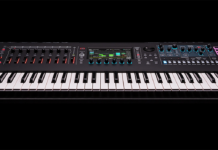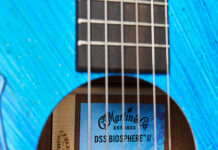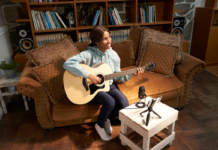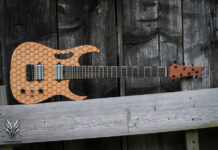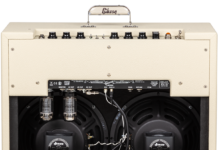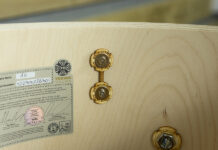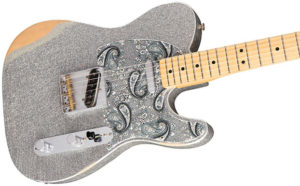
Brad Paisley Discusses His Signature Fender Road Worn Telecaster
As a co-host of the CMA Awards since 2008, regular performer on dozens of other televised country music award shows and specials, top-grossing touring and chart-topping country radio artist and several-time performer at the White House, Brad Paisley is probably the most visible “ambassador of the Telecaster” to come along over the last decade or so.
But while he’s almost always seen with a Tele-style guitar—either a sweet vintage model or a custom ax built for him by Bill Crook—in his hands, Paisley was never recognized with a signature model electric guitar until Fender announced the Brad Paisley Road Worn Telecaster at this year’s Summer NAMM Show in Nashville.
For devotees of Paisley’s blazing fretwork as well as dedicated fans of Tele twang, the Brad Paisley Road Worn Telecaster was worth the wait.
The model, which is based on a 1963 Telecaster that is one of Paisley’s main stage instruments, faithfully adheres to the classic vintage Tele template with its dual single-coil pickups, 21-fret maple neck and “ashtray” bridge with three brass saddles, but it also delivers custom flair with its Silver Sparkle nitrocellulose lacquer finish, black-and-silver paisley pickguard, distinctive enhanced V neck profile and unique bridge pickup wound to Paisley’s specs. Paisley opted for light relic aging on the guitar as he wanted it to have a broken-in feel while still being new enough for players to add their own character and battle scars.
The Brad Paisley Road Worn Telecaster’s most unusual feature may be its body construction, consisting of a lightweight Paulownia core sandwiched between thin layers of spruce on the body’s top and back.
“Bill Crook made a custom guitar out of Paulownia for me,” says Paisley, “so I thought it would be cool if Fender could get enough of that wood to make my signature model. They looked into it and said they could do that, but they also had some ideas on how they could enhance it with a spruce top and back. The great resonance of this Tele is mainly due to that idea, because the spruce top is very responsive and vibrates like it does on an acoustic guitar. I wanted my Telecasters to all have light bodies as the most magic Teles I’ve ever played were really light. This was a great way to guarantee that.”
Paisley says the other truly magical component of this guitar is the custom-wound bridge pickup.
“Fender has a guy who is a genius pickup winder,” he says.
“We worked really hard to come up with something that perfectly complemented the body, because it’s crucial to have pickups that match the guitar. The first pickup he sent me sounded very close to what I had in mind, but it wasn’t quite there. I gave him some feedback and he told me that he knew exactly what the pickups needed. He didn’t tell me what he planned on doing, but he wound me another one and the guitar just came to life. The pickup sounded so good that I asked him to wind several more for me so I could put them in other guitars that I have. The neck pickup is great, too. It matches up really well with the bridge pickup.”
While Paisley couldn’t be happier with the guitar’s cool custom looks, well-crafted design and electronics and its incredibly comfortable playability (partly thanks to its distinctive, vintage-inspired V-shaped neck profile), he is proudest of the guitar’s affordable price ($1,199.99).
“I think this is the value of a lifetime for a Tele player,” he says. “These days you can easily spend five grand on a Custom Shop Telecaster, but all along I’ve viewed the Tele as a workingman’s instrument. Leo Fender’s original vision was to make something economical that’s a good value, can be beaten up and that any bar player can plug into an amp and play.
“The Tele wasn’t designed to be precious. It’s a cutting board with a neck—a thick slab of wood that you can cut vegetables on and then play. I didn’t want to make something my fans can’t afford. I want to see it in the hands of some kid going to a guitar lesson and to see an aspiring, struggling musician playing this guitar in a bar on Broadway in Nashville.”
Source: www.guitarworld.com

